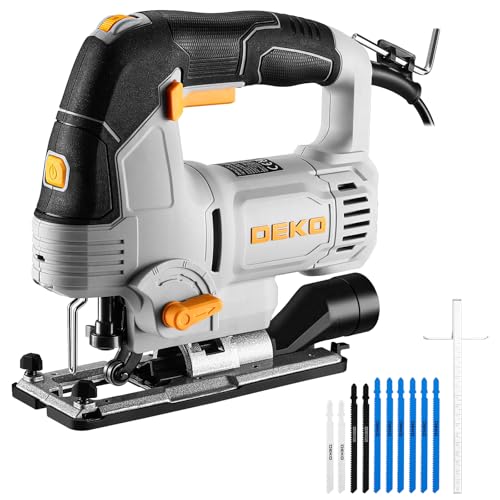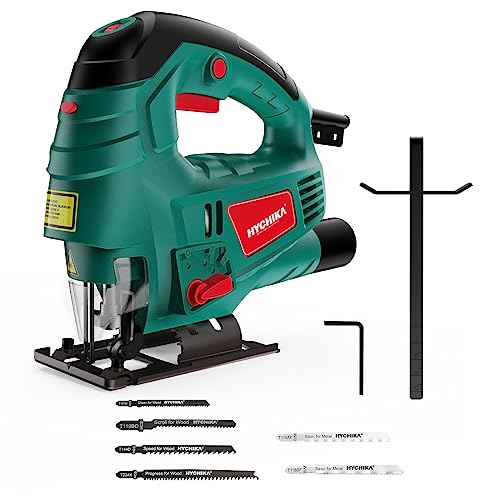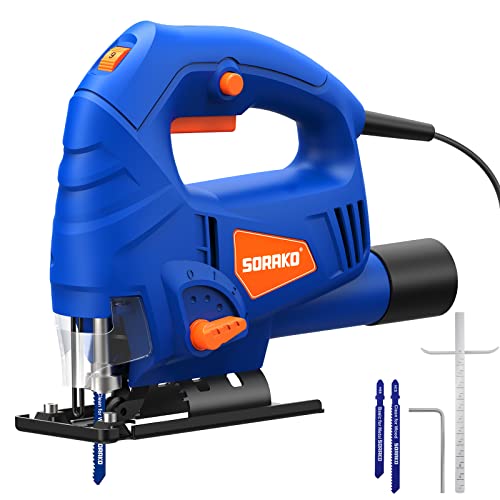What is a jigsaw tool and why its a must-have for DIYers
Cut curves, create clean edges, and master your next project. Here’s everything you need to know about the jigsaw tool, the most versatile saw in your workshop
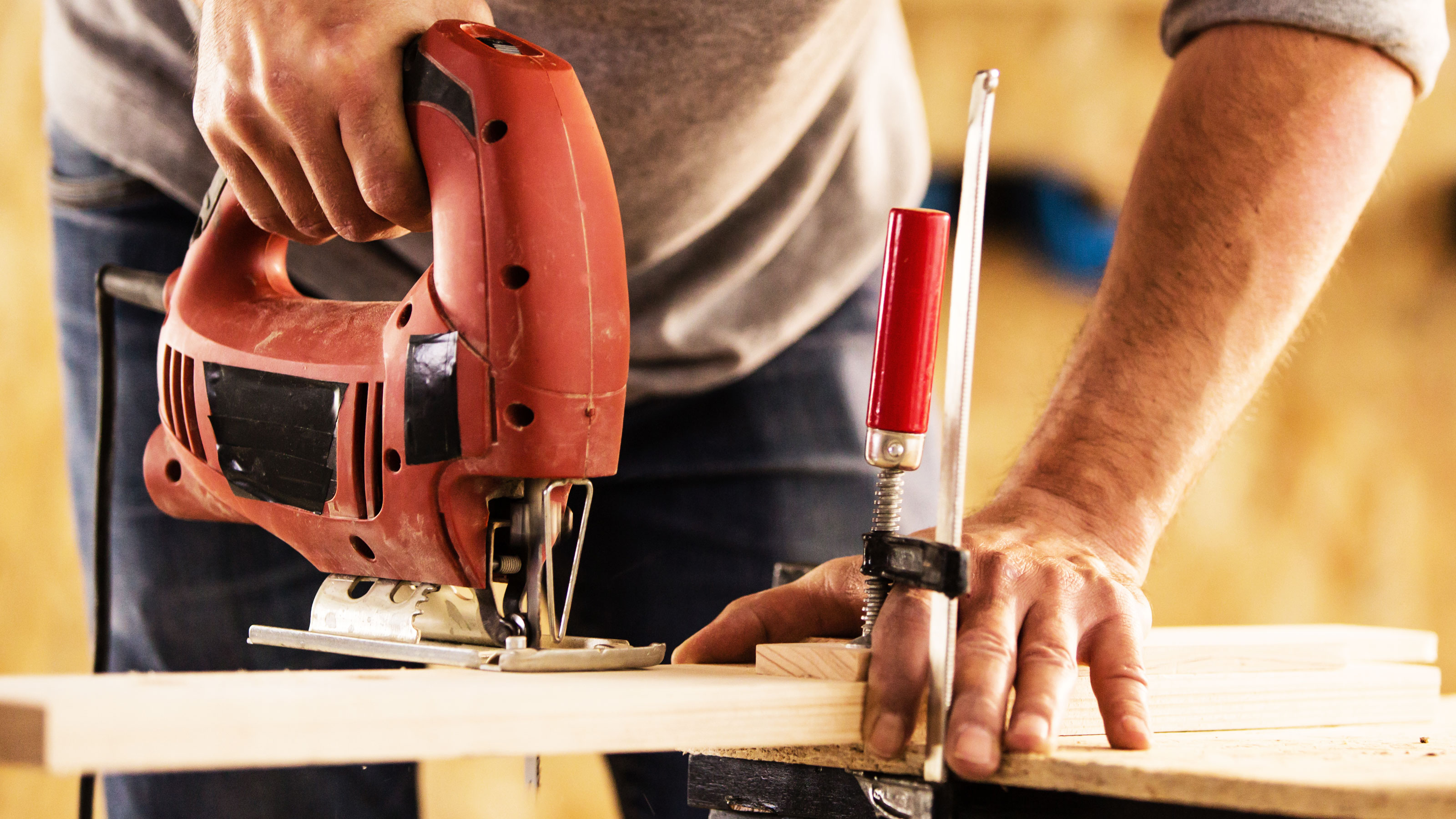
Whether you’re comparing different types of saws like circular saws, reciprocating saws, and coping saws, the jigsaw power tool stands out for its ability to cut both straight and curved lines with ease.
This lightweight handheld saw is perfect for anyone tackling home renovations, woodworking, or creative DIY builds.
In this guide, we’ll explain what a jigsaw tool is, how to use one safely, and which blades to choose for wood, metal, and plastic, plus the best options available on Amazon right now.
What is a jigsaw?
A jigsaw is a handheld, portable power saw whose narrow blade moves up and down (reciprocates) through a workpiece, guided by a flat baseplate (or shoe) pressed against the surface.
It allows controlled cutting by combining a grip (with trigger, lock, and speed control) with a guided blade motion. Because of its design, a jigsaw tool is especially useful for non-straight line work, plunge cutting, bevel adjustments, and intricate shapes.
Jigsaws are ideal for projects where you need more flexibility than a straight circular saw can offer, but still want power and speed.
What DIY jobs can be done with a jigsaw
A jigsaw is hugely versatile for all kinds of home and workshop tasks:
Bring your dream home to life with expert advice, how to guides and design inspiration. Sign up for our newsletter and get two free tickets to a Homebuilding & Renovating Show near you.
- Cutting curves or arcs in plywood, MDF, or chipboard for decorative panels, arches, or speaker boxes
- Cutting out sink or hob cut-outs in kitchen worktops
- Trimming laminate or flooring around door jambs or pipes, making internal cuts for sockets
- Cutting metal sheets (thin gauge), aluminum profiles, or plastic sheeting when fitted with the right blade
- Making bevel cuts (if jigsaw supports tilt), plunge cuts to start from an interior point, or cutouts for inserts
Because a jigsaw can start from interior points (by drilling a pilot hole and inserting the blade), it’s a go-to tool when you need to cut holes inside a sheet rather than from its edge.
How to use a jigsaw power tool
Begin by selecting the correct blade for your material (wood, metal, plastic) and slot it into the blade clamp (many modern jigsaws use tool-free or quick-release clamps). Ensure the blade is correctly seated and secure.
Mark your cutting line clearly on the workpiece. Secure or clamp your workpiece so it cannot shift. Use a straightedge or guide fence if you need straight cuts.
Power on the jigsaw at a slow setting, align the blade with your starting point (or plunge in if the model allows), then smoothly guide the saw along the line using consistent pressure. Use slower speeds and greater care when navigating tight curves or thicker materials.
After completing your cut, you may find tear-out or rough edges, sand or smooth them as needed to polish the finish.
Cheap jigsaw deals
Are jigsaw blades universal?
Not every blade fits every jigsaw, though standards have converged somewhat. Many contemporary jigsaws accept T-shank blades, which are now very widely supported across brands.
T-shank is strong, stable, and allows easy swapping in most modern models.
Older or entry models might use U-shank or bayonet-style blades, which restrict your choice of blade sets.
To ensure compatibility, check your jigsaw’s manual or examine the blade clamp (is it labelled T-shank or compatible?). If your tool supports T-shank, you’ll see a broad selection of blades on Amazon, such as starter sets or specialty blades.
Can a jigsaw cut metal?
Yes, with the right blade, technique, and care, a jigsaw can cut many types of metal, particularly thinner sheets or profiles. To do so:
- Use a bi-metal, HSS (high-speed steel), or HCS blade rated for cutting metal.
- Choose a high TPI (teeth per inch) - often 18 to 24 TPI or more - to produce smoother edges in metal.
- Run the jigsaw at relatively low speed to avoid overheating the blade and the workpiece.
- Use cutting fluid or oil to lubricate the cut, reduce friction, and help with chip evacuation.
- Clamp the metal securely, and apply gentle steady pressure, don’t force the blade.
For mild steel or aluminium up to a few millimetres thick, a jigsaw works well. For heavy steel plates or thick sections, dedicated metal-cutting tools like a band saw or angle grinder might be better suited.
What jigsaw blades are for cutting which material
Here’s a blade-material table:
Material | Blade type / characteristic | Best practice / notes |
|---|---|---|
Softwood, basic carpentry | Low TPI (e.g. 6–10 TPI) HCS wood blades | Fast, rough cuts where speed matters more than edge finish |
Hardwood, laminates | Medium TPI (10–14 TPI), BIM or HSS blades for wood or mixed use | Cleaner cuts, less tear-out |
Plastic, acrylic, PVC | Fine-tooth blades, higher TPI, fine set | Slow speed to avoid chipping, support the sheet to avoid flex |
Thin metal (aluminium, mild steel) | High TPI bi-metal or HSS blades | Use lubricant, go slow |
Very thin sheet metal | Ultra fine TPI bi-metal / specialized metal blades | For very thin gauge only — above that, use another tool |
A good all-round blade kit is a smart buy, as it lets you switch between materials. A multi-material T-shank set is ideal for most DIYers.
How thick wood can a jigsaw cut?
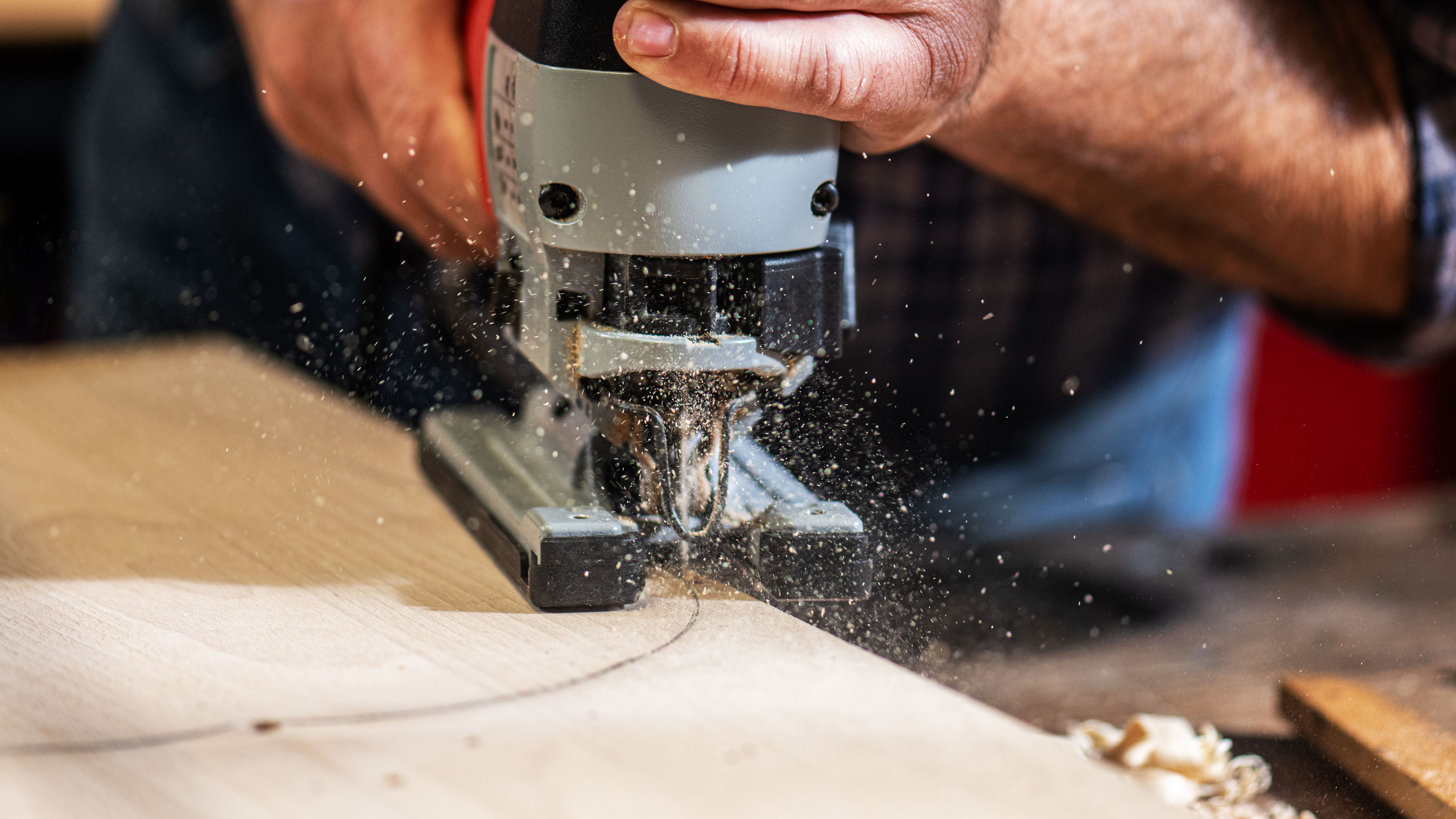
The depth you can cut depends on the blade length and jigsaw design.
Common blades are around 100 mm (≈ 4 in) long, giving practical cutting depths of up to ~ 70 mm (2¾ in) in softer wood. For harder woods or dense timbers, you may need to stay well under that.
If you have a 100 mm blade, it’s safer to cut material up to about 50 mm (≈ 2 in) in thickness, going deeper increases risk of bending or breaking the blade, and stresses your motor. Longer blades exist but are more prone to twist or break under load.
How much does a jigsaw cost?
Jigsaw pricing varies widely depending on corded vs cordless, brand, power, electronics, build quality, and accessories.
At the lower end, you can find corded jigsaws for around £20–£40. For example, basic models with fewer features can begin in this range.
At the mid to upper end, especially for cordless, brushless motor, tool-free blade change, variable speed, and improved build, expect £80–£150+ or more.
Here are some popular models (available via retailers like Amazon or major UK tool shops) you might look up:
- Bosch PST 800 PEL Jigsaw - a feature-rich corded option with dust blower and keyless blade change.
- DeWalt DCS331N 18 V XR Cordless Jigsaw - cordless, brushless, ideal for site or workshop flexibility.
- Bosch PST 650 Jigsaw - compact and budget-friendly.
- BLACK+DECKER BES602‑GB Jigsaw - affordable and suitable for lighter tasks.
- Titan TTB867JSW Electric Jigsaw - basic electric model.
- Makita JV101DZ 12 V CXT Jigsaw - part of Makita’s 12 V system, compact and nimble.
When choosing, compare features like speed range, orbital action, blade change system, dust management, and whether you need a charger/battery (for cordless).
So, what is a jigsaw tool really about? It’s the one saw that gives you freedom, to cut curves, create shapes, and handle materials that other saws struggle with.
Once you know how it works and how to use it properly, you’ll wonder how you ever managed without it.
Whether you’re cutting wood for a shelf, metal for a bracket, or plastic for a finish piece, the jigsaw’s versatility makes it a must-have in any DIY toolkit. Choose the right blade, take your time, and let the saw do the work, and you’ll get clean, precise results every time.
Steve Jenkins is a freelance content creator with over two decades of experience working in digital and print and was previously the DIY content editor for Homebuilding & Renovating.
He is a keen DIYer with over 20 years of experience in transforming and renovating the many homes he has lived in. He specialises in painting and decorating, but has a wide range of skills gleaned from working in the building trade for around 10 years and spending time at night school learning how to plaster and plumb.
He has fitted kitchens, tiled bathrooms and kitchens, laid many floors, built partition walls, plastered walls, plumbed in bathrooms, worked on loft conversions and much more. And when he's not sure how to tackle a DIY project he has a wide network of friends – including plumbers, gas engineers, tilers, carpenters, painters and decorators, electricians and builders – in the trade to call upon.
